Borneo is a big chunk of Asian island divided into three countries, with Malaysia owning two states on it, Sabah and Sarawak (the latter surrounding the tiny but mighty country of Brunei), while the bottom part of the island is largely made up of Indonesia’s Kalimantan.
There are various indigenous tribes that call the island home. Today let’s take a look at the tattooing culture among the tribes in the two Malaysian states.
Sarawak, the larger of the two states, has a higher recognition when it comes to tribal tattoos but this doesn’t mean that it carries less significance in Sabah. Read on below for the different tattoos from the different tribes.
The tribal tattoos of Sabah
After Sabah was colonised by the British, it spelled the gradual eradication of its tribal tattooing culture. Prior to that, Murut and Dusun were two of the land’s tribes that were most recognised for their intricate tattoo patterns.

(Photo source: Dr Ismail Ibrahim | Malay Mail)
One of the reasons Sabah’s traditional tattoos have become obsolete in modern time is due to its savage connotations. There have been documentations of male warriors receiving their tattoos only after killing a foe (noted in a book by anthropologist H. Ling Roth). Headhunters, of course, would be decorated with these tattoos, marking their victory and triumph.
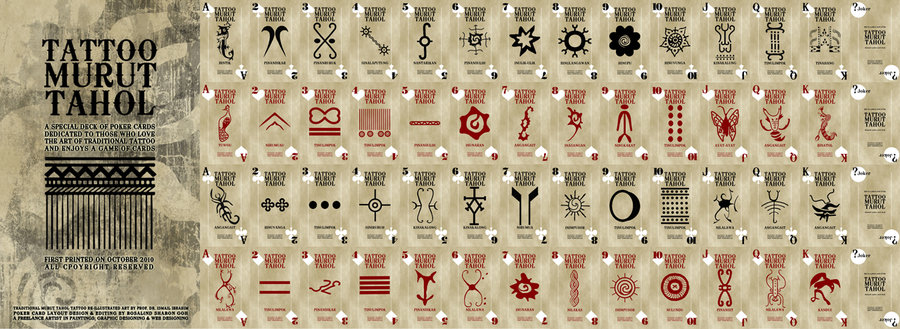
(Photo source: UCM Padlet)
Due to the much earlier annihilation, traditional Sabahan tattoos are less documented as opposed to the ones from Sarawakian tribes. Only bits and pieces of it can be found in anthropologists’ documents and, to a lesser extent, on the internet. It’s not a much-discussed topic among current generations of Sabahan tribes either as the full history and knowledge of the tattoos are long gone with the past centuries’ generations.

(Photo source: beingdusun.blogspot.com)
That’s not to say tattooing is a lost art in Sabah. Like its neighbour Sarawak, it does boast a number of tattoo artists, among them are ones like Limuel Cendrick Estrop and Bobby James Aloysius who aim to garner more recognition for Sabahan tattoos and along the way, hope to bring back the lost tattoos of Sabah.

(Photo source: Hello Sabah)
To make the experience more authentic, these tattoo artists also offer to do their customers’ tattoos using traditional tools. For Limuel Cendrick Estrop, he uses the “hand-poke” method, which he describes to Hello Sabah as a ““no-machine” method of tattooing by pushing ink into skin by using only needles”. Needless to say, this gives a whole new meaning to the word ‘pain’ but, of course, the beautiful intricate design at the end of the process would be worth it.
The tribal tattoos of Sarawak
The most well-known tribal tattoo designs in Sarawak come from the Iban tribe, though others like Lahanan, Kenyah and Kayan also have their respective tribes’ tattoos. An article posted on Dayak Impressions listed the most common tattoos; the most popular nowadays is the Bungai Terung, thanks to the design being spotted on a Hollywood celebrity (more on this below) and tribal tattoo artists like Ernesto Kalum and Boy Skrang popularising it among their customers.
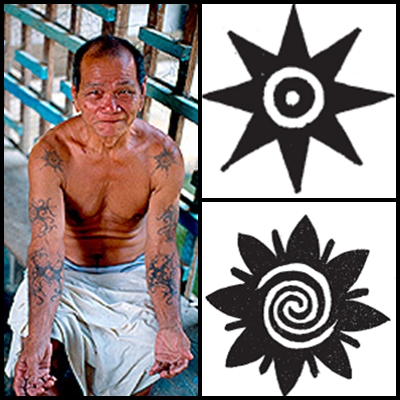
Illustrated above are the Usung Dian and Ipa Olim tattoos. The former is a representation of the king of fruits, Durian, while the latter is “a stylised rendering of the opened fruit of a wild mango (Hose.C and Shelford R, 1901)”.

b. Jalaut (Charles Hose and R. Shelford, 1906),
c. The plukenetia plant fruit (Illustration © Anita Walsmit Sachs, 2004).
Above are the Mata Aso and Jalaut tattoos. The illustrated plukenetia plant fruit, which is also cultivated as a vegetable, is the inspiration of the original Mata Aso design. It is believed that these tattoo – rosette motifs inked on the shoulder of warriors – originated from the Kayan tribe, which later spread out to other tribes in Borneo.
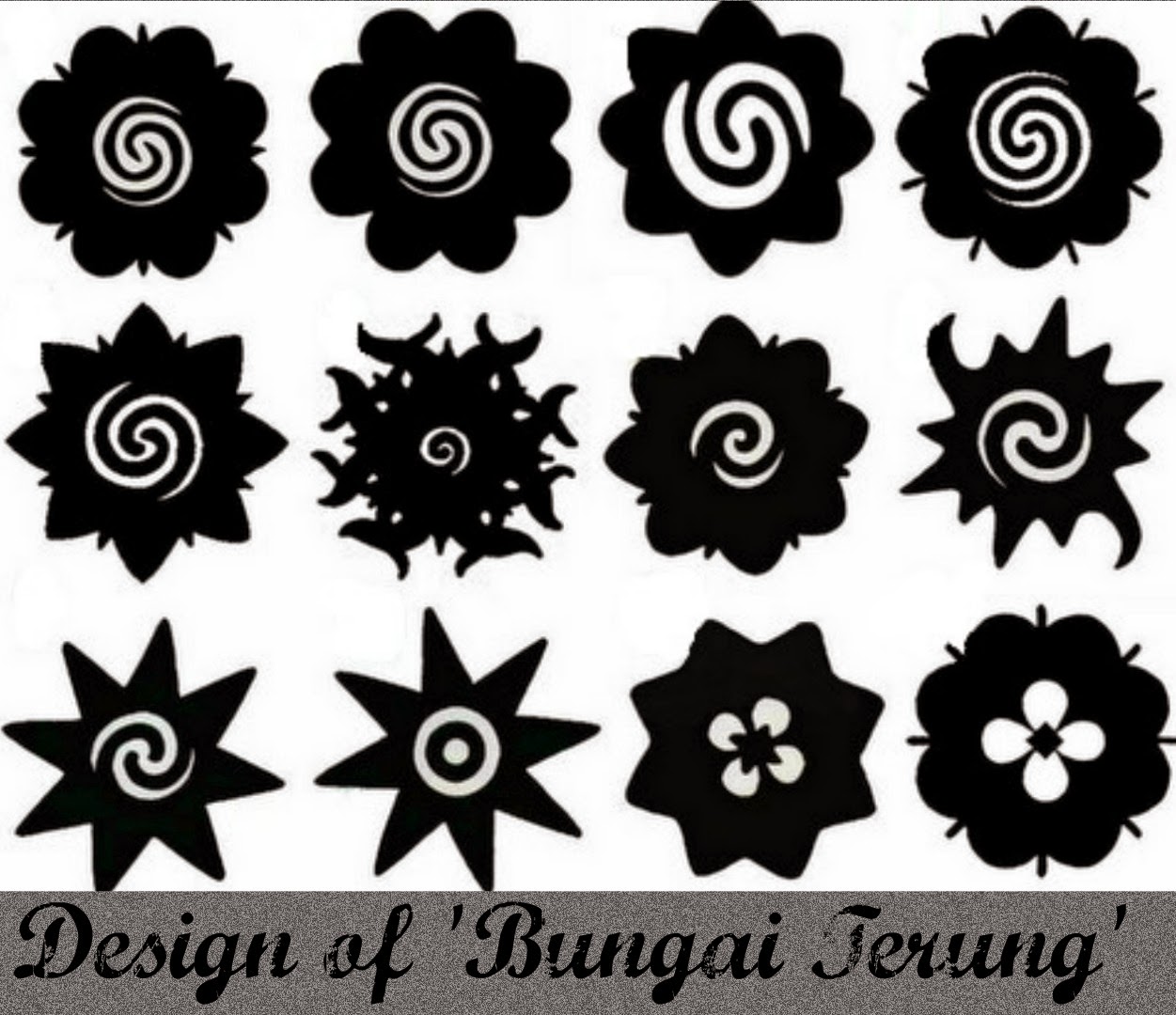
(Photo source: robinsonmike.blogspot.com)
Now the most widespread of these motifs are Bungai Terung. It is a coming-of-age tattoo for the males in an Iban tribe, though in this modern age it is no longer a requirement for every Iban man to have this Kelingai (tattoo).

(Photo source: The Rakyat Post | Lars Krutak)
Not forgetting the females of the Iban tribe, whose tattoo Pala Tumpa is done in the designs of a centipede and a scorpion. The tattoo is believed to ward off evil spirits.
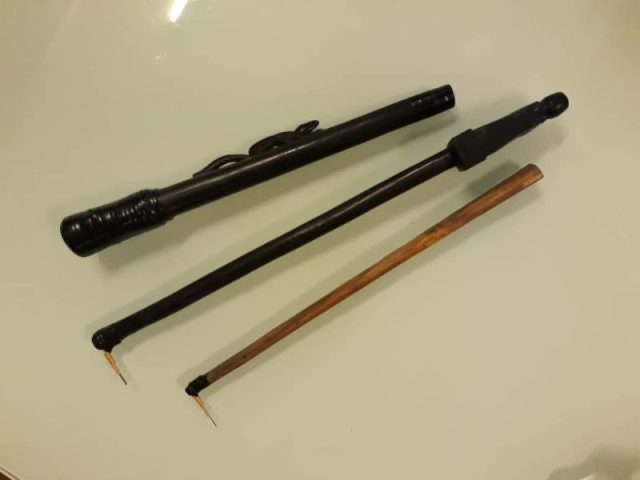
(Photo source: The Rakyat Post)
To truly experience what their ancestors felt, some Iban people will get their tattoos done the traditional way. No modern tattoo machines, just wooden tattoo tools (a mallet is used to tap the inked kayok tatok into the skin). Sarawakians call this the “hand-tap” method.
Any famous celebs with these tattoos?
So far Malaysians have two big name celebrities to thank for spreading the popularity of its tribal tattoos, mainly Sarawakian ones. (Sorry Sabah…maybe one day “The Flash” star Grant Gustin might wanna hand-poke tattoo the image of his beautiful Kadazan-descent wife on his calf?)
The first is the late celebrity chef Anthony Bourdain, who bravely endured a hand-tapped tattoo of a star on his chest, done by local tattooist Boy Skrang, during the filming of “Anthony Bourdain: Parts Unknown” in Sarawak.

(Photo source: Uncharted Backpacker)

“whimpering and yelping” (Photo source: Uncharted Backpacker)
Then there’s Hollywood star Henry Golding. You’ve seen his handsome mixed-race mug in movies like “Crazy Rich Asians”, “The Gentlemen” and “Last Christmas”. (“G.I. Joe: Snake Eyes” too, soon!) Born to an English father and an Iban mother, the 33-year-old pays tribute to his mother’s heritage by getting himself tattooed with traditional Iban motifs.
The actor chronicled his bejalai in the 2017 Discovery Channel Asia documentary, “Surviving Borneo”. In one of the episodes, he had a fig tree tattoo inked on his right thigh by Ernesto Kalum who, of course, utilised the traditional method to do it.
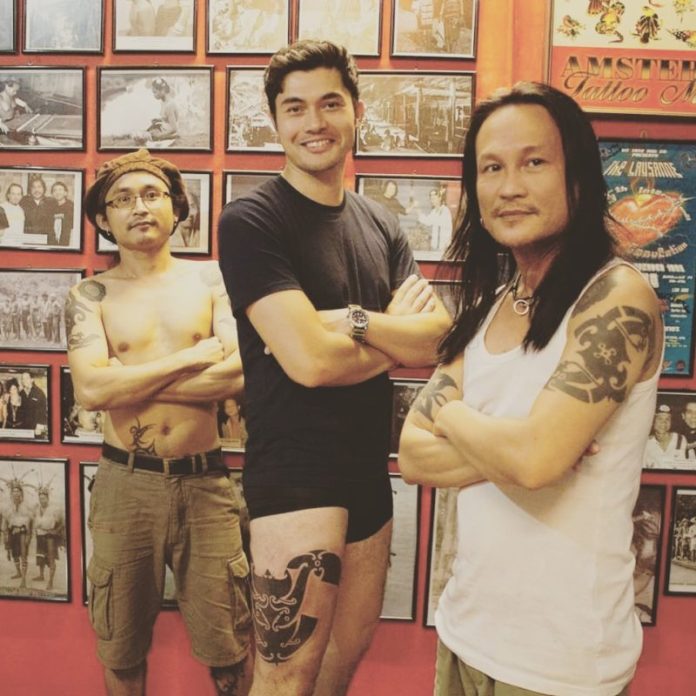
(Photo source: DayakDaily)

(Photo source: RojakDaily | Henry Golding | YouTube)
The first ever tattoo he had done was the one on his right arm which, in Iban, as per Malay Mail’s report, states, “child of Sarawak, son of Margaret and Clive”. He followed that up with the Bungai Terung on each of his shoulder.
Will there be more celebs donning these tribal tattoos of Borneo? Let’s wait and see who else would brave the traditional inking method and proudly bring these tattoos more worldwide recognition.
(Photo source: Tatler Malaysia | The Rakyat Post | Lars Krutak | robinsonmike.blogspot.com | Uncharted Backpacker)

